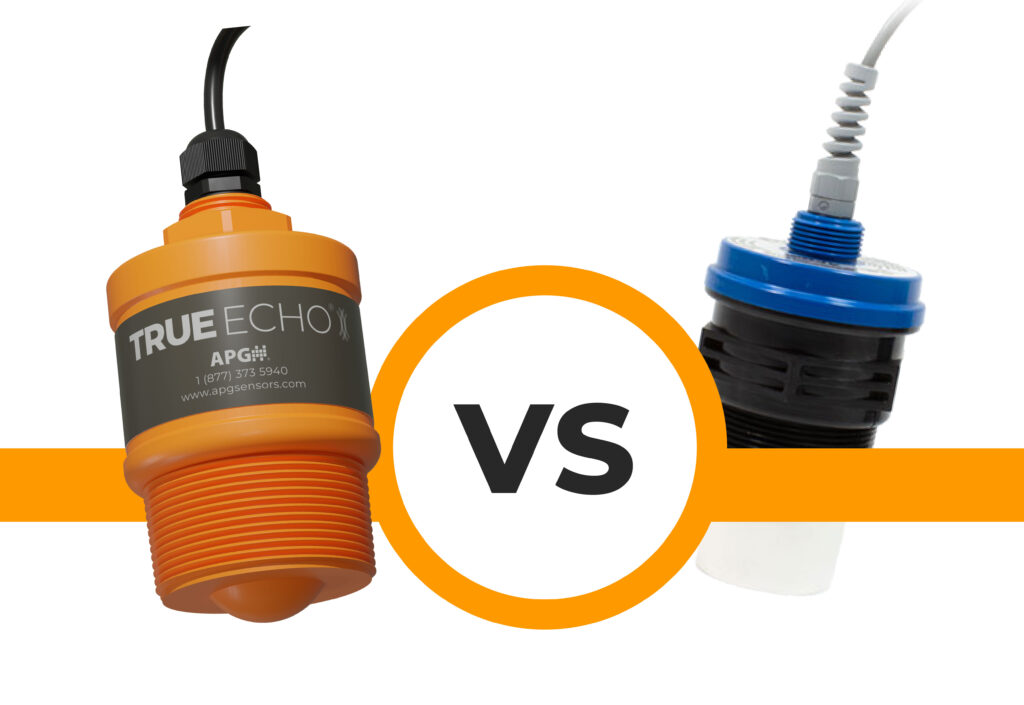Ultrasonic level sensors and radar level sensors both offer accurate, non-contact measurement solutions to various challenging applications. Each sensor has its own advantages and disadvantages, making the choice dependent on specific requirements. In this blog, we’ll explore the differences between these two technologies and identify the best applications for each.
What Is An Ultrasonic Level Sensor?
Ultrasonic level sensors operate by emitting a burst of sound waves that travel to a target and bounce back to the sensor. The distance between the sensor and the target is calculated by using the time it takes for the sound burst to return to the sensor. Volume, weight, or other measurements can also be calculated with help from other parameters programmed into the sensor.
Key Points:
- Operation: Emits sound waves that bounce back from the target.
- Measurement: Calculates distance based on the time taken for sound waves to return.
- Requirements: Needs an unobstructed air column between the sensor and target.
Common Applications for Ultrasonic Level Sensors:
- Liquid Level Measurement: Used in tanks, wells, pits, or lakes.
- Solids Level Measurement: Suitable for bulk solids, but less effective in environments with dust or powders.
- Open Channel Flow: Used in water treatment plants, environmental monitoring, and irrigation canals for flow calculation.
- Presence Detection and Object Profiling: Effective in dirty or wet environments for slow-moving targets, such as in car washes.
What is a Radar Level Sensor?
Radar level sensors utilize electromagnetic waves instead of soundwaves. These waves travel much faster than sound waves and react differently to various materials, making radar sensors suitable for more challenging environments.
Key Points:
- Operation: Uses electromagnetic waves that bounce off objects.
- Measurements: Less affected by temperature, foam, vapors, powders, and dust.
- Dielectric Constant: Effectiveness depends on the target material’s dielectric constant.
Common Applications for Radar Level Sensors:
- Chemical / Petrochemicals: Effective in harsh environments.
- Energy, Oil, and Gas: Suitable for extreme conditions.
- Food and Beverages: Ideal for maintaining hygiene and precision.
- Minerals and Mining: Can handle dust and rough conditions.
- Wastewater: Performs well in sludge and clarifier measurements.
Comparing Ultrasonic and Radar Level Sensors
When selecting between ultrasonic and radar level sensors, consider the following:
- Environmental Factors: Ultrasonic sensors are ideal for straightforward applications, while radar sensors excel in foamy, dusty, or vapor-filled environments.
- Cost: Ultrasonic sensors are generally less expensive but may not perform as well in challenging conditions.
- Accuracy: Radar sensors offer better accuracy in extreme conditions, but at a slightly higher cost.
Have more questions about our sensors? Our Measurement Experts would love to help you. Give us a call, drop us an email, or live chat with us today!
WRITTEN BY

Sami T.
Sami Thompson is APG’s Marketing Technical Writer and has been with the company since 2022. With a master’s degree in English from Utah State University and a 40-page thesis publication under her belt, Sami has a demonstrated strong writing background. In her free time, Sami enjoys reading and birdwatching.


